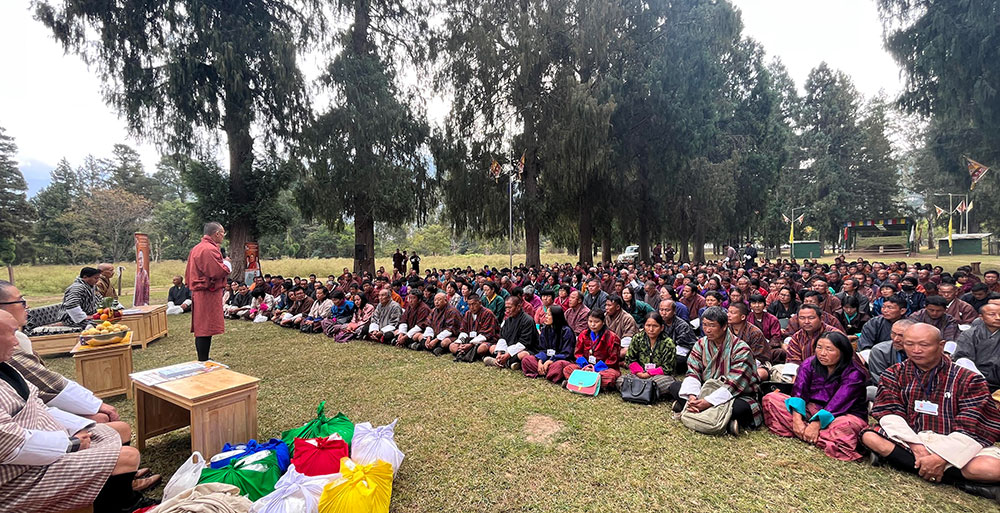… outgoing parties’ supporters could decide general round
Tshering Palden
Following an unexpected exit in the 2018 elections and facing public reprimand for electoral rule violations before the poll day, the People’s Democratic Party (PDP) staged a substantial comeback in the primary round of the fourth National Assembly elections.
The party garnered 133,217 votes, comprising 83,052 electronic voting machine (EVM) votes and 50,165 postal votes, securing victories in 39 out of the 47 constituencies and surpassing its previous records.
While the party won in electronic voting machine votes, it faced a significant deficit in postal ballots, winning in nine constituencies with 56,180 EVM votes compared to 23,703 postal votes.
In the 2013 primaries, PDP secured 12 out of 47 constituencies, capturing 32.5 percent of the total votes cast in its favour, while DPT led with 44.5 percent of total votes.
PDP’s victories were concentrated in southwest and central west Bhutan, including dzongkhags of Haa, Punakha, and Wangduephodrang. The party also secured constituencies in Chukha, Gasa, Paro, Samtse, and Tsirang.
In 2013, the party obtained 32.6 percent, or 68,546 of 210,239 votes cast, winning the general elections and forming the government. The party faced a setback in the 2018 parliamentary elections, exiting the primary round as the third-highest with 27.4 percent of total votes cast.
Returning in the fourth round of National Assembly elections, PDP retained half of its 2018 team, including members from other parties like Druk Nyamrup Tshogpa and Druk Phuensum Tshogpa.
Voters observed a more assertive president with much-improved knowledge of local dialects, delivering campaign speeches fluently. The party deployed a professional media team for the multimedia content. The party’s campaign included large gatherings, showcasing a significant cadre of coordinators and party workers.
PDP secured victories in 25 constituencies with a margin of over 1,000 votes more than the second-placed party. While not leading in eight constituencies, it dominated major vote banks such as Samtse, Chhukha, Tsirang, Sarpang, Samdrupjongkhar, Mongar, and Dagana. It also won in two out of four constituencies in Trashigang with a substantial vote difference, often exceeding 60 percent.
Despite being a priority dzongkhag for all political parties, Samtse was surprised by rallying behind PDP, exceeding expectations with a significant margin of victory, playing a decisive role in the party’s landslide victory in the primary round. (Story on pg 9)
PDP achieved a landslide victory in Tsirang in its two constituencies, Sergithang-Tsirangtoe and Kilkhorthang-Mendrelgang, with over 4,000 votes in each constituency, surpassing Bhutan Tendrel Party by more than fourfold. (Story on pg 8)
Conquering New Territories
The party secured victories in constituencies that historically favoured other candidates. For instance, Panbang constituency consistently elected Dorji Wangdi from Druk Phuensum Tshogpa in the past three terms. However, in this primary election, PDP’s candidate Lungten Dorji secured victory, with Dorji Wangdi standing second with 2,104 votes and 524 votes fewer than the PDP candidate.
In Pemagatshel, PDP’s candidate Pema Wangchuk won in Nanong-Shumar constituency with a slim margin of 23 votes above Bhutan Tendrel Party’s Yeshey Jamtsho. The constituency, traditionally a DPT stronghold, elected DPT’s candidate Yonten Namgyal in the 2018 bye-election after the DPT president resigned.
Similarly, constituencies like Bartsham-Shongphu, Bomdeling-Jamkhar, Drametse-Ngatshang, Chhoekhor-Tang, and Kengkhar-Weringla, which had historically remained with one party, saw voters not strongly aligning with PDP’s principles and pledges.
If the party continues to receive support from major dzongkhags like Samtse, Sarpang, Chhukha, Tsirang, Mongar, and Dagana and maintains its ground in the eastern constituencies, it stands a chance to win the general round.
However, unlike the primary round, the focus in the upcoming round is on seat wins rather than the number of votes. Supporters of parties that have exited the race could play a pivotal role in deciding the governing party for the next five years.


